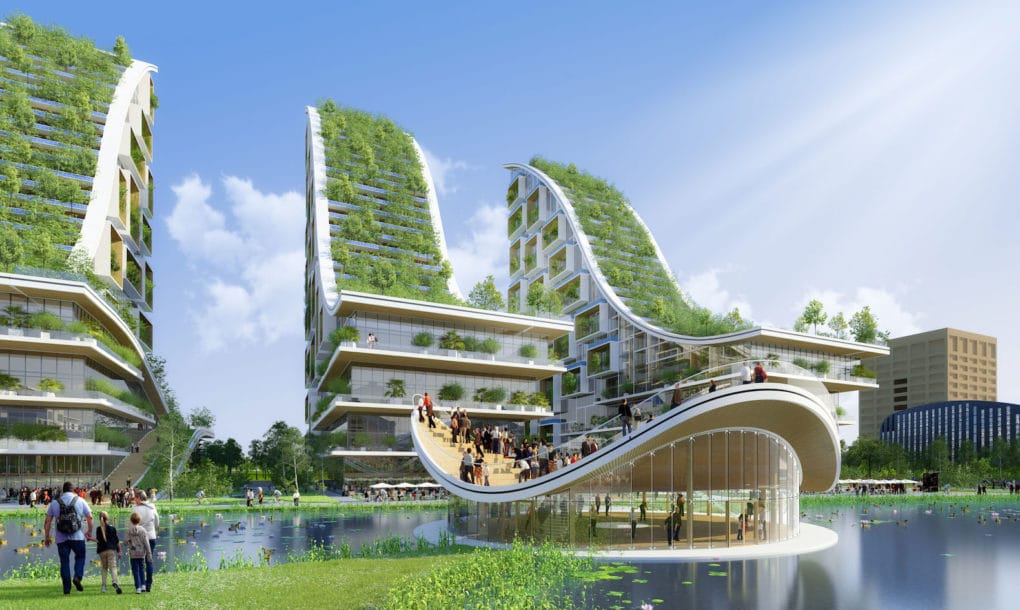How Does Architecture Integrate Sustainable Materials In Commercial Construction?

As the world continues to face climate change and other environmental challenges, sustainable construction has become more important than ever. This means using building materials that are not only eco-friendly but also durable, aesthetically pleasing, and cost-effective. Here are some of the most popular green building materials and their benefits:
Bamboo
Bamboo is one of the fastest-growing plants in the world and is therefore a sustainable building material. It's strong, lightweight, and flexible, making it a popular choice for flooring, walls, and roofs. Additionally, bamboo is resistant to water and insects, making it durable and long-lasting.
Sheep Wool
Sheep wool is a natural insulation material that is sustainable, biodegradable, and fire-resistant. It's also a renewable resource and does not require a lot of energy to produce. Sheep wool insulation is easy to install and can help reduce energy costs, making it a popular choice for green buildings.
Recycled Steel
Recycled steel is a sustainable building material that is durable, fire-resistant, and energy-efficient. It's made from scrap metal and does not require the use of additional natural resources. Additionally, steel can be recycled indefinitely, making it a popular choice for eco-friendly construction.
Straw Bales
Straw bales are a natural, biodegradable building material that is often used for insulation. They are made from the stalks of harvested grain and are renewable, sustainable, and easy to source. Straw bales have good insulation properties and can help regulate temperature and humidity inside a building.
Cork
Cork is a natural, sustainable material that can be used for flooring, walls, and ceilings. It's renewable, biodegradable, and can be harvested without harming the tree. Cork is also highly-insulating and allergen-free, making it a popular choice for green building projects.
Recycled Glass
Recycled glass is a sustainable building material that is made from waste glass that has been crushed and melted down. It can be used for countertops, flooring, and walls, and is durable, fire-resistant, and easy to clean. Additionally, recycled glass is non-toxic and does not release harmful chemicals into the environment.
Rammed Earth
Rammed earth is a sustainable building material that consists of soil, clay, and gravel, compacted into solid walls. It's renewable, durable, and highly-insulating, making it a popular choice for green construction. Rammed earth also has excellent thermal mass properties, which means it can absorb and store heat, helping to regulate temperature inside a building.
Recycled Plastic
Recycled plastic is a sustainable building material that is made from recycled plastic bottles. It can be used for insulation, roofing, and walls, and is durable, water-resistant, and easy to install. Additionally, recycled plastic is fire-resistant and does not release toxic chemicals into the environment.
Conclusion
As you can see, there are many sustainable building materials available that can help reduce our impact on the environment while also creating beautiful, durable buildings. From bamboo to recycled plastic, these materials offer a range of benefits and can be used in a variety of ways. If you're interested in designing a green building, be sure to consider these materials as part of your overall construction plan.
FAQs
What are the benefits of using green building materials?
Green building materials offer a range of benefits, including reduced environmental impact, energy efficiency, and cost savings. These materials are sustainable, renewable, and can help create healthier indoor environments.
What are some popular green building materials?
Popular green building materials include bamboo, sheep wool insulation, recycled steel, straw bales, cork, recycled glass, and rammed earth. Each of these materials offers unique benefits and can be used in a variety of green building projects.
How do I choose the right sustainable building materials for my project?
Choosing the right sustainable building materials depends on a variety of factors, including your budget, building location, and specific design goals. It's important to work with a professional architect or builder who understands the benefits and drawbacks of different materials and can help you make an informed decision.
Are sustainable building materials more expensive than traditional materials?
The cost of sustainable building materials can vary depending on the type of material and the specific project requirements. While some sustainable materials may be more expensive than traditional materials, they often offer long-term cost savings through energy efficiency, durability, and reduced maintenance requirements.
How can I ensure my building is truly sustainable?
Creating a truly sustainable building requires a holistic approach that considers factors like energy efficiency, water conservation, and material selection. It's important to work with experienced professionals who can help you design a building that meets your sustainability goals and maximizes your resource use efficiency.



Post a Comment for "How Does Architecture Integrate Sustainable Materials In Commercial Construction?"